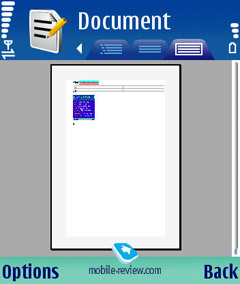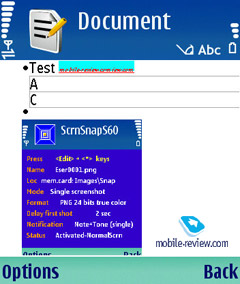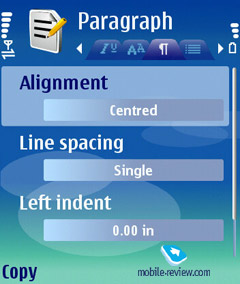|
|
Nokia ESeries and why it never made it on the market
Only on very rare occasions do we need to write a special piece aka preface for a handset review so as to take a good look at some concepts or current market state. And the Nokia E51 just happens to be one of these devices – this phone is unique in terms of its features table and what hopes Nokia holds for it. As a matter of fact, this is the first device among those that should bring the ESeries back to its original path.
The Nokia E51 is very untypical of this maker and was brought to life only by meagre sales of the ESeries-branded offerings in general – had it been otherwise, it would have threatened sales of both feature phones and smartphones. So what has driven Nokia into such position and why this phone is so special?
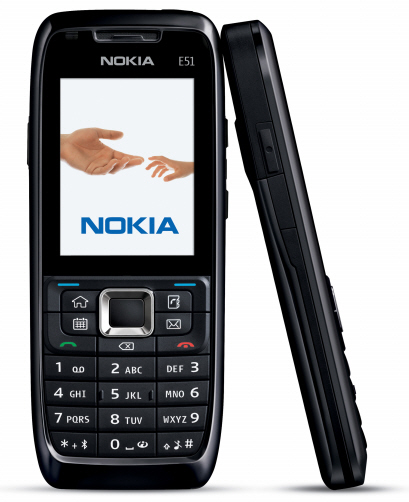
Let us work our way up to this problem. To start the things off, let’s note that the ESeries has always comprised enterprise solutions, and what’s newsworthy about it is that this series saw release much later the class of consumers of Nokia-branded enterprise solutions had shaped up. These users have always been looking for a couple of aspects: usability and reliability, solid call quality, battery life, average feature pack and a potent phonebook, and, optionally, an organizer. Consumers demanded no special abilities in business-minded phones – everything they wanted was pretty much straightforward. But what the ESeries’s debut was like? Back when new devices were only presented, we noted that potential buyers gave the Nokia E60 and the Nokia E61 a cold welcome.
The reason for that doesn’t take a rocket scientist to figure out, though – the price tags of these handsets, which were too hefty for the market. On top of that, the company had been selling the concept of a real business-phone to everyone for many years, then propagandized NSeries, and finally tried to re-brainwash the market that a bundled camera is the root of all evils for the business-minded audience. And if you actually compare the camera popularization efforts that Nokia made and their work on explaining why it should be dumped in enterprise solutions, you will discover an interesting paradox. The amount and quality of PR-activities for the former campaigns was greater and better than for the latter, and technically, the company was struggling against itself, yet with different divisions involved in the process. It turned out that all three Nokia’s teams (Nokia Mobile Phones, Multimedia Division, Enterprise Solutions) had own phone types, unique mindsets and frequently strategies that were running counter to that of other divisions. The only thing they shared was the maker’s name engraved on their handsets, but that was pretty much about it. Nokia Mobile Phones always was above all other divisions – its portfolio was bigger, price tags were adequate, and these handsets had been shaping up consumers’ preferences for many years. The NSeries promotions really got to the market only in autumn 2006, before that moment, this line-up had hardly qualified as “all-the-rage”.
ESeries users – where are they?
Now let’s take a consumer seeking for a business-inclined solution, and sitting on top of his priority list is the price/quality ratio. In this sense Nokia turns out to be the prioritized brand – its phones are used by most people belonging to this target audience. But here is an odd thing – for the most part, they utilize the 6000-series models, which are not smartphones. Once you look at the sales curve of smartphones, it becomes pretty much apparent that they have been on the up and up only since 2006. So back then, everyone walking into a store had three options to choose from as far as Nokia-branded solutions were concerned:
Conservative way. Upgrade of his/her previous model with a device coming from the same segment – like replacing the Nokia 6210 with the Nokia 6230.
- Migration. Going for a smartphone instead of their 6000-series device – probably an NSeries-branded phone, or a conventionally indexed handset, like the Nokia 6680.
- Dedicated device. Migration from the 6000-series to the ESeries, which brings along some extended email abilities and a couple of other amenities.
Now for the prerequisites that are to be taken account of. The life span of an enterprise device (for its target audience, not all owners) is at least 18 months; and in many European countries it is as long as 24 months. It turns out that even if the target audience had some smartphones on their hands early in 2006, there weren’t many of them, since these consumers don’t see themselves as technology pioneers eager to try out every new gadget around. The first wave of smartphone consumers had emerged in 2005, which rendered the purchase of similar devices in 2006 completely useless. In a word, there were no people on the market familiar with smartphones and willing to get one. So the ESeries performance was marred by this factor as well, and furthermore, it didn’t pack some of the features available with other Nokia’s business-minded phones in the 6000-series. All consumers openly admitted that while these handsets could actually be enterprise solutions, they didn’t fit their needs.
The ‘Dedicated device’ scenario saw only some marginal sales, since the vast majority of consumers picked the NSeries. While retailing for pretty much the same money, they offered more punch (camera, music, etc), and on paper looked totally identical to the ESeries.
Let me give you a simple example. When I was in a T-Mobile store, some man took the Nokia E61 in his hands and seemed hooked on it. Judging by a number of signs and a tattered Nokia 6210, I recognized an E61 target audience’s member in him. Then I witnessed an utterly interesting dialog with a shop assistant.
- I need to replace my device, and I would like something with comparable battery life, but also I need Bluetooth for car and probably email.
- It is a great choice – this phone is designed for these tasks, it handles emails perfectly, also you will be able to reply almost instantly, see, there is a thumbboard here.
- Honestly, I don’t need to reply, I’ll be reading mail.
- This display will be a great help then, believe me, this is a decent business solution.
- What about other features?
- It is a powerhouse – almost like the NSeries, except for music and camera.
- Can I see what do you have from the NSeries?
This short conversation clearly shows that even shop assistants couldn’t explain what was the gain in having a ESeries device, why Nokia’s devices handled MS Office documents better than everything else, and what were the differences between the email clients found in the ESeries and the NSeries. The market wasn’t prepared for the arrival of this solution.
Moreover, quaintly-shaped handsets, like the E61 and the E70 backfired at Nokia – whereas the former would often be compared with BlackBerry, and not given any credit, the latter appeared to be an SMS-heavy device, like the Nokia 6822. No manufacturer had ever had success with these solutions, and neither had Nokia. Effectively, the entire line-up got reduced down to one model – the Nokia E60, but since it had no camera onboard, the market didn’t really appreciate it. On top of that, Nokia’s rant was completely ignored by the target audience – they knew exactly what they needed.
So when it arrived in the market, the ESeries turned out a bust with meagre sales. Against the backdrop of the NSeries devices that were on the up and up, the range of enterprise devices turned into a major pain for the manufacturer.
Let us remind you that the first generation of the ESeries housed Nokia’s very own application Documents for reading MS Office files. However Nokia then dumped it, even though its first version trumped all other applications, including those for Microsoft’s portable devices (back then, this was a true revelation). Learn more about it from this write-up.
So why would they ditch such a powerful application? Two reasons – first, the ESeries was by no means a wild success on the market, so all side expenses on the development of extra software were to get cut to the minimum. Second, nobody saw any difference between that utility and QuickOffice on other S60-powered solutions, that’s why the benefits or running such a steep project were somewhat vague. And a PR campaign for this functionality in the ESeries had to total such an astronomic number in order to succeed, that they weren’t even considering that option.
First attempt to turn the things around
The above is readily proven by all the events that followed: the company didn’t roll out a bunch of models and instead focused on one single offering – the Nokia E50, planned as a bestseller. In some ways they were trying to incline the Nokia 6310i users towards changing their phones and going for the E50 as a replacement. The company had a lot of resources allocated towards this campaign, and enjoyed quiet success with these activities. So as to keep the succession line of the concept, the model came in two editions – with and without camera. The latter variant proved to be a quite popular offering, while the former ended up in a narrow niche.
For the first time in the history of the ESeries, the Nokia E50 enjoyed a substantial number of followers all thanks to its light price tag and the minimalist design, which was quite a rare occasion back then. But when comparing its sales with the Nokia 6233 on free markets, the ratio appears to be 30 to 1, meaning that the company would sell 30 units of the Nokia 6233 and only one Nokia E50 (either of the modifications). Essentially, the concept of an affordable phone jam-packed with features couldn’t stand the test once again. There were many reasons for that, but the foremost were: dumped corporate sales and the attempt to promote it in retail networks with tiny advertising budgets. And this left the audience completely oblivious to this phone.
The ESeries can serve as a good example of Nokia’s standard moves when a whole range turns out a bust on the market. That is, the company’s first urge to roll out something popular and yet not very hungry for consumers’ wallets, so as to establish a market, then a foray into the market and attempts to get people grow accustomed to new product ranges. However, this trick never really worked out for the Nokia E50. It’s price wasn’t its selling point after all. The first lines of our review of the Nokia E50 have some very useful bits of information, so you might want to take a look.
Setting a new course – Nokia E65 and Nokia E51
Nokia’s failure in the field of enterprise solutions brought the Nokia E65 to life, as they rushed to rectify all their past omissions. Technically, the Nokia E51 belongs to its generation as well (even though it was scheduled for a later release), so they had to be identical functionality-wise, complementing each other with their different form-factors. However in order to somehow support the sales Nokia decided to bring the Nokia E65 to the mass market with some very queer color schemes. Like red. Now imagine an enterprise phone in red – now you get it. We won’t be focusing on the reasons why the E65 saw release – find out more bout it in îáçîðå Nokia E65our review on the phone.
And the candybar-shaped phone seems to be somewhat late, since only now does it start shipping. So what segment does it really belong to? Enterprise solutions? Definitely. Mass-market phones with business-heavy features? Again, yes. Nokia has tried to pinch the best traits off the two worlds – enterprise and mass market. However with the E51 the maker is set to launch not an addition to some line-up or any particular device, but a stand-alone model packing a pretty no-frills set of features:
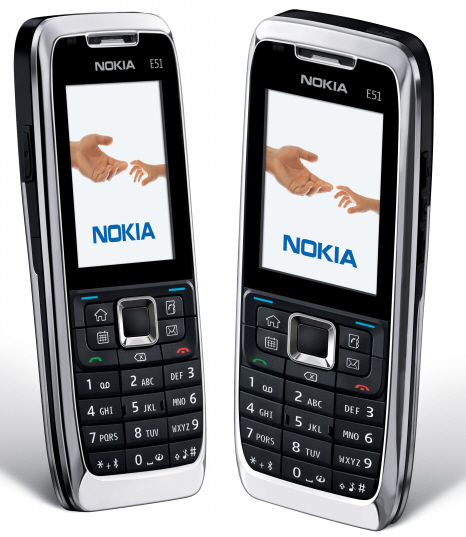
- Good reception, long battery life;
- Reliability – metal casing, classic design;
- Conventional ergonomics;
- Average functionality;
- Decent price/quality ratio;
We already covered all these parameters in the first paragraphs of this write-up, and the Nokia E51 has them all. On top of that, this phone comes packaged with a bevy of other functions which consumers will stay unaware of right up to the moment when they buy it. The E51 will be picked mainly for its brand, materials used and the price tag, while all other merits and qualities will be given short shrift. We also have all reasons to believe that the company is spot on with this design, and this solution is precisely positioned price-wise. This phone is a decent way to go for those who make calls and want to have no troubles with them, but also wouldn’t mind having some extra features at hand. No other Nokia-branded phone has featured such a well-polished and next-to-perfect main department of the handset, specifically, calls. Had they set the bar this high in a mass-market product, they would have thrown a hugeish stone in their own garden, so they would have needed to live up to this level in all other solutions again and again, which normally costs a tad more than a couple of dimes. That’s why after rolling out a good device, over at Nokia they knew it would never become a bestseller – it’s going to sell pretty well, but that’s about it. Otherwise, other models in Nokia’s portfolio will have to take a hit, the 6000-series in the first place, but its time is still to come.
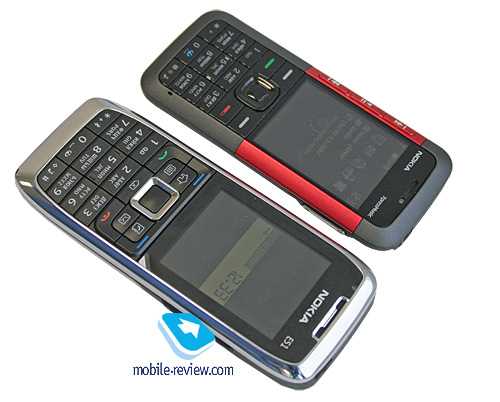
The reason why this solution won’t be really popular is the reputation of the ESeries, or, more precisely, the lack thereof. Its target audience almost never has these phones on their shortlists, and all that hype and very positive reviews of the Nokia E61/E61i have resulted only in some mediocre sales, which can make you wonder why. On the other hand, techi have found all the essentials they are craving for in this phone, so it has been a wild success among them. In fact, the ESeries has had its target audiences swapped over –technology enthusiasts have ended up as the dominating part of its audience. And this only puts business users off.
Nokia E51 and ESeries in general
All this background can give you a good idea why the Nokia E51 will never be a bestseller, while it is a decent offering for people who know what’s what in handsets. Just because the maker has let its engineers and marketers loose and put so much into it – in this sense the E51 is one unique phone, which is very unlikely to be matched by Nokia itself in 18 months to come.
The last thing about the poor debut and life story of the ESeries is the way it is retailed - the company has been targeting these devices at retail networks year in year out, instead of offering a package with a ESeries device and, say IntelliSync. At the end of the day the ESeries ends up way behind Nokia’s multimedia smartphones. The reorganization that Nokia is currently going through will have a significant impact on the fate of the ESeries, since more and more enterprise applications are making their ways into the NSeries, from Push Mail to document editors. So all attempts to set these two line-ups apart are artificial in their nature, and they can’t hide it – while the ESeries will come with more preinstalled applications and a conventional menu view, the user is free to get custom apps onto his multimedia smartphone, and the NSeries multimedia menu can be mastered hands down. So we can’t really hope the ESeries to morph into a strong stand-alone product range in the years to come – there is only one line-up that has done it so far, and this is the NSeries multimedia smartphones.
P.S. In this piece we have left out the Nokia E90, which doesn’t really seem to belong in the ESeries, being an attempt to boost the range in general. But since it has been enjoying quite modest sales, it doesn’t really make any difference as far as the ESeries prospects are concerned.
Eldar Murtazin ([email protected])
Translated by Oleg Kononosov ([email protected])
Published — 27 November 2007
Have something to add?! Write us... [email protected]
|
News:
[ 31-07 16:21 ]Sir Jony Ive: Apple Isn't In It For The Money
[ 31-07 13:34 ]Video: Nokia Designer Interviews
[ 31-07 13:10 ]RIM To Layoff 3,000 More Employees
[ 30-07 20:59 ]Video: iPhone 5 Housing Shown Off
[ 30-07 19:12 ]Android Fortunes Decline In U.S.
[ 25-07 16:18 ]Why Apple Is Suing Samsung?
[ 25-07 15:53 ]A Few Choice Quotes About Apple ... By Samsung
[ 23-07 20:25 ]Russian iOS Hacker Calls It A Day
[ 23-07 17:40 ]Video: It's Still Not Out, But Galaxy Note 10.1 Gets An Ad
[ 19-07 19:10 ]Another Loss For Nokia: $1 Billion Down In Q2
[ 19-07 17:22 ]British Judge Orders Apple To Run Ads Saying Samsung Did Not Copy Them
[ 19-07 16:57 ]iPhone 5 To Feature Nano-SIM Cards
[ 18-07 14:20 ]What The iPad Could Have Looked Like ...
[ 18-07 13:25 ]App Store Hack Is Still Going Strong Despite Apple's Best Efforts
[ 13-07 12:34 ]Infographic: The (Hypothetical) Sale Of RIM
[ 13-07 11:10 ]Video: iPhone Hacker Makes In-App Purchases Free
[ 12-07 19:50 ]iPhone 5 Images Leak Again
[ 12-07 17:51 ]Android Takes 50%+ Of U.S. And Europe
[ 11-07 16:02 ]Apple Involved In 60% Of Patent Suits
[ 11-07 13:14 ]Video: Kindle Fire Gets A Jelly Bean
Subscribe
|

